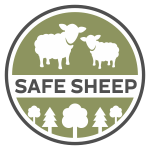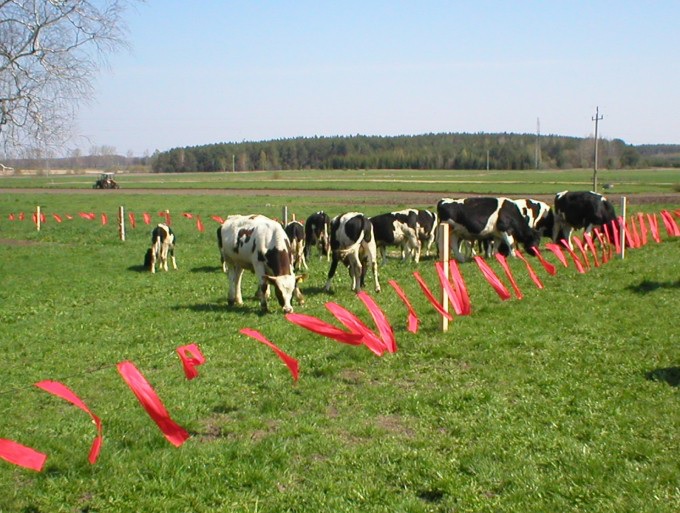Description
Fladry (fence of flags) are used for hunting wolves in Eastern Europe. They might be adopted for livestock protection. It is made from fabric flags that are hanging to the string or wire in small distance from each other. Flags do not need to be red, even though it is a usual colour. Flags must be 50-60 cm long and 10 cm width attached quite close to each other (30-40 cm). Flags must hang about 15 cm from the ground so that wind could move them easily. Only freely moving flags are effective, therefore farmer must check and fix them if needed. The territory fenced with flags must be closed, because wolves will go around till they find unfenced spot.
Suitability
Suitable for all farms.
Effectiveness 
The effectiveness of fladry stems not from a physical barrier, but from instinctive fear of wolves. However, over time wolves get accustomed and once they dare to cross the fladry for the first time, they will easily do that again. Therefore measure is not suitable for long-term protection and should be used for temporary protection (e.g. up to two weeks) or together with other measures like dogs, fences, etc.
Price 
The measure is relatively cheap – you will have to buy the string, poles and fabric.
Maintenance 
Maintenance is not difficult but regular. You need to check whether the string is tightly stretched, there are no missing or whirled flags.
Installation requirements and recommendations:
- 50–60 cm long and 10 cm width brightly coloured flags, usually red;
- Hanging 30–40 cm from each other;
- About 15 cm gap between ground and the bottom of the flag;
- Flags must freely wave in the wind;
- Territory fenced with flags must be closed;
- The flag string must be stretched no higher than 80 cm above the ground;
- When a fladry is used as a supplement to other enclosure, the flag string shall be stretched at a distance of 1.5 to 2 m from the outer edges of the enclosure.



